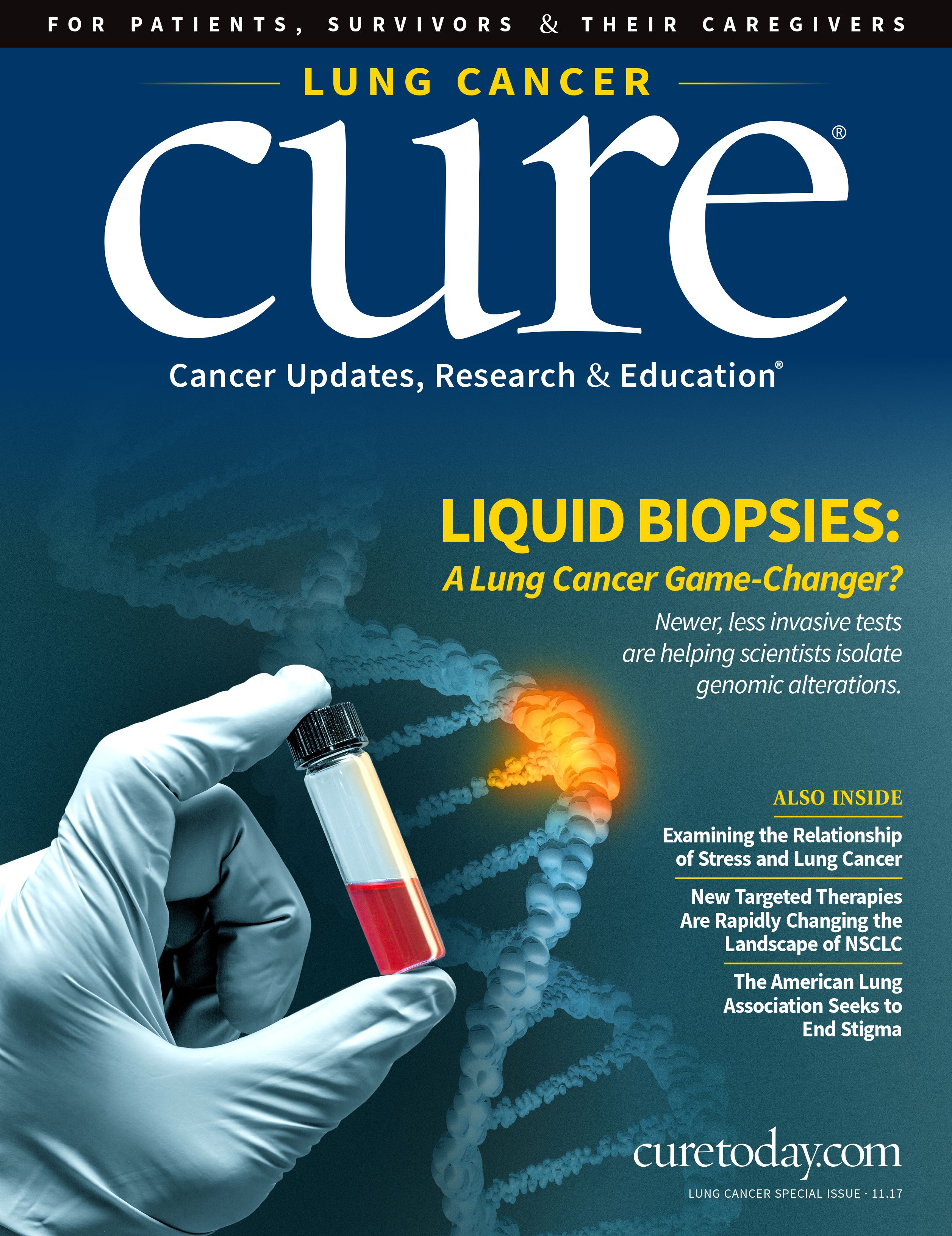Publication
Article
CURE
A Little Blood Goes a Long Way
Author(s):
THE TERM “BIOPSY” DATES to the 1800s. Tissue biopsies have served as the definitive way to confirm a diagnosis of cancer. However, much like cancer drug development is evolving, so is the way we can detect the disease, categorize it more precisely and, more recently, even pinpoint how to treat it.
THE TERM “BIOPSY” DATES to the 1800s. Tissue biopsies have served as the definitive way to confirm a diagnosis of cancer. However, much like cancer drug development is evolving, so is the way we can detect the disease, categorize it more precisely and, more recently, even pinpoint how to treat it.
A term fairly new to most patients — “liquid biopsy” — is changing the way patients obtain clarity on their tumor and may actually influence therapy. The first liquid biopsy in the United States was approved in 2016 by the Food and Drug Administration (FDA) for the detection of epidermal growth factor receptor (EGFR) mutations in non-small cell lung cancers (NSCLC).
Compared with a tissue biopsy, which requires surgery or a needle penetrating the body, this is a less invasive procedure for patients. A liquid biopsy is done with a blood draw, and results are back roughly in a few days versus a week or more. The information gained may determine whether the cancer will respond to already approved or newer investigational cancer therapies.
Although we hope that liquid biopsies may one day help detect lung cancer early on in disease, as of now, they may help with monitoring patients in the treatment process.
Liquid biopsies can be particularly useful when a mutation becomes apparent after treatment has started. If this is accompanied by disease progression, the liquid biopsy results could potentially influence therapy.
For instance, in some cases, this biopsy is picking up the T790M mutation, which becomes more detectable as patients develop resistance to EGFR-targeted therapies in a process termed “clonal selection.” A newer drug, Tagrisso (osimertinib), is approved specifically for this mutation. Interestingly, the results of the recent phase 3 FLAURA trial found that Tagrisso proved superior as frontline therapy, compared with the standardof- care use of Tarceva (erlotinib) or Iressa (gefitinib) for EGFR-mutated NSCLC, and is being reviewed by the FDA on the breakthrough therapy designation track for this indication.
Trials like this highlight the use and importance of gene sequencing technologies for decision-making among medical experts.
In the cover story, you will hear from some of those experts and meet a patient who had a liquid biopsy — on the day he tested positive for EGFR gene mutation, he walked out of the cancer institute with a targeted therapy in tow. We are very optimistic that this trend toward less invasive ways for more personalized and effective treatment will continue.
DEBU TRIPATHY, M.D.Editor-in-ChiefProfessor of MedicineChair, Department of Breast Medical OncologyThe University of Texas MD Anderson Cancer Center






